Abarth 500 595 695 vs Mazda CX-30 – Which model is better for everyday use?
Everyday use, family trips or long-distance drives – here’s where the differences show.
Discover whether Abarth 500 595 695 or Mazda CX-30 fits your lifestyle better.
Costs and Efficiency:
Price and efficiency are key factors when choosing a car – and this is often where the real differences emerge.
Mazda CX-30 has a noticeable advantage in terms of price – it starts at 25200 £, while the Abarth 500 595 695 costs 32600 £. That’s a price difference of around 7328 £.
Engine and Performance:
Power, torque and acceleration say a lot about how a car feels on the road. This is where you see which model delivers more driving dynamics.
When it comes to engine power, the Mazda CX-30 has a to a small extent edge – offering 186 HP compared to 155 HP. That’s roughly 31 HP more horsepower.
In acceleration from 0 to 100 km/h, the Abarth 500 595 695 is to a small extent quicker – completing the sprint in 7 s, while the Mazda CX-30 takes 8.30 s. That’s about 1.30 s faster.
In terms of top speed, the Mazda CX-30 performs clearly perceptible better – reaching 204 km/h, while the Abarth 500 595 695 tops out at 155 km/h. The difference is around 49 km/h.
There’s also a difference in torque: Mazda CX-30 pulls slight stronger with 240 Nm compared to 235 Nm. That’s about 5 Nm difference.
Space and Everyday Use:
Beyond pure performance, interior space and usability matter most in daily life. This is where you see which car is more practical and versatile.
Seats: Mazda CX-30 offers slightly more seating capacity – 5 vs 4.
In curb weight, Abarth 500 595 695 is hardly perceptible lighter – 1410 kg compared to 1455 kg. The difference is around 45 kg.
In terms of boot space, the Mazda CX-30 offers decisively more room – 430 L compared to 185 L. That’s a difference of about 245 L.
In maximum load capacity, the Mazda CX-30 performs significantly better – up to 1406 L, which is about 856 L more than the Abarth 500 595 695.
When it comes to payload, Mazda CX-30 distinct takes the win – 496 kg compared to 385 kg. That’s a difference of about 111 kg.
Who comes out on top?
Overall, the Mazda CX-30 shows itself to be wins the duel decisively and secures the title of DriveDuel Champion.
It convinces with the more balanced overall package and proves to be the more versatile choice for everyday use.
 @ Mazda Motor Corporation
@ Mazda Motor Corporation
Mazda CX-30
Abarth 500 595 695
The Abarth 500, particularly in its 595 and 695 renditions, captures the spirit of Italian motoring with its compact yet aggressive design. Known for its lively performance and distinctive styling, this little powerhouse is a joy to drive, offering an engaging experience that appeals to enthusiasts. With its rich motorsport heritage, the Abarth 500 embodies the essence of fun and excitement on both the streets and the race track.
details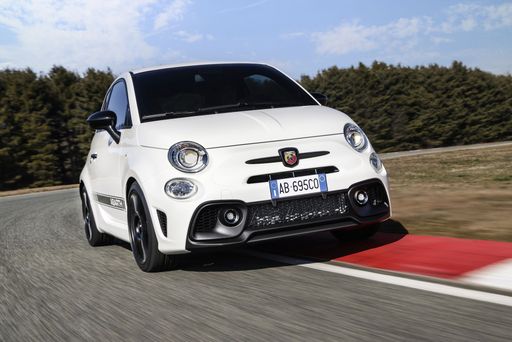 @ Abarth / Stellantis Media
@ Abarth / Stellantis Media
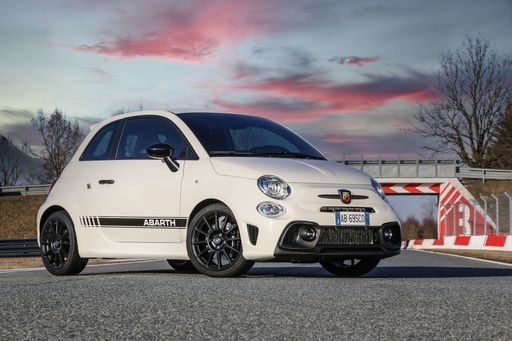 @ Abarth / Stellantis Media
@ Abarth / Stellantis Media
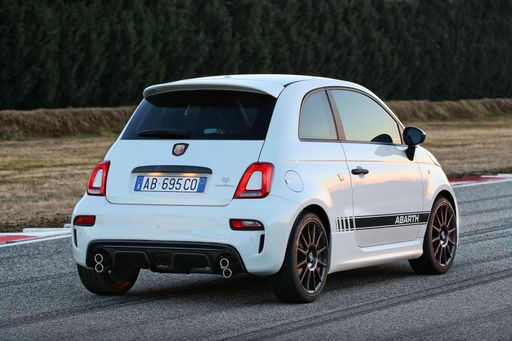 @ Abarth / Stellantis Media
@ Abarth / Stellantis Media
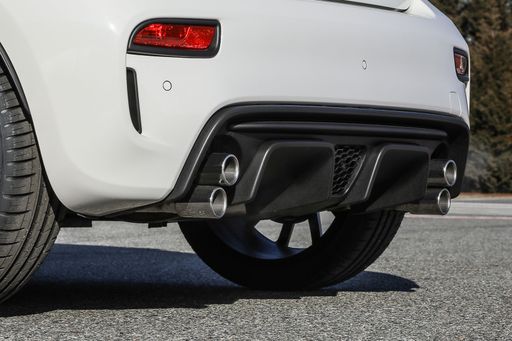 @ Abarth / Stellantis Media
@ Abarth / Stellantis Media
 @ Abarth / Stellantis Media
@ Abarth / Stellantis Media
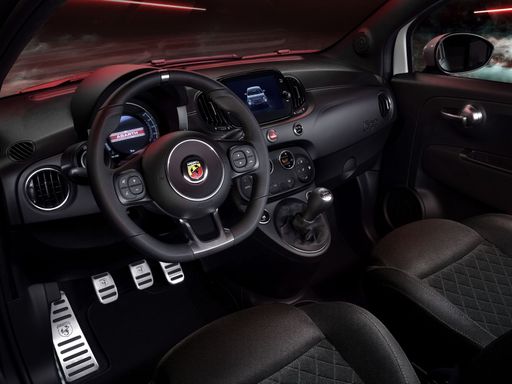 @ Abarth / Stellantis Media
@ Abarth / Stellantis Media
Mazda CX-30
The Mazda CX-30 effortlessly combines sleek design with a sense of adventure, making it an appealing choice for urban explorers and countryside enthusiasts alike. Inside, the cabin is thoughtfully designed, offering both comfort and cutting-edge technology to enhance the driving experience. Its performance on the road is agile, providing a smooth and engaging journey for drivers and passengers.
details @ Mazda Motor Corporation
@ Mazda Motor Corporation
 @ Mazda Motor Corporation
@ Mazda Motor Corporation
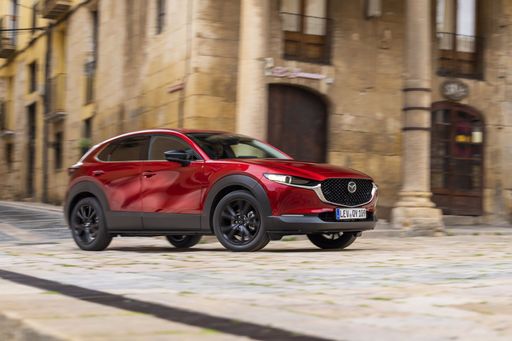 @ Mazda Motor Corporation
@ Mazda Motor Corporation
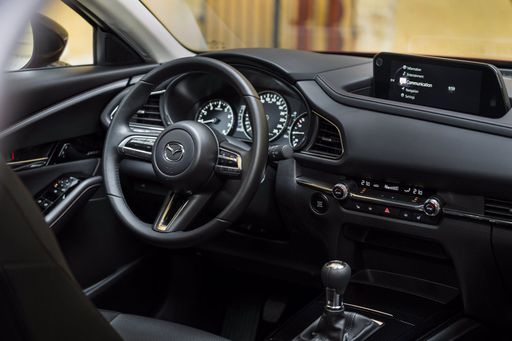 @ Mazda Motor Corporation
@ Mazda Motor Corporation
 @ Abarth / Stellantis Media
@ Abarth / Stellantis Media
|
 @ Mazda Motor Corporation
@ Mazda Motor Corporation
|
|
|
|
Costs and Consumption |
|
|---|---|
|
Price
32600 - 39400 £
|
Price
25200 - 36800 £
|
|
Consumption L/100km
-
|
Consumption L/100km
5.7 - 6.6 L
|
|
Consumption kWh/100km
17.1 - 18.8 kWh
|
Consumption kWh/100km
-
|
|
Electric Range
242 - 265 km
|
Electric Range
-
|
|
Battery Capacity
37.80 kWh
|
Battery Capacity
-
|
|
co2
0 g/km
|
co2
129 - 148 g/km
|
|
Fuel tank capacity
-
|
Fuel tank capacity
48 - 51 L
|
Dimensions and Body |
|
|---|---|
|
Body Type
Hatchback
|
Body Type
SUV
|
|
Seats
4
|
Seats
5
|
|
Doors
3
|
Doors
5
|
|
Curb weight
1410 - 1435 kg
|
Curb weight
1455 - 1587 kg
|
|
Trunk capacity
185 L
|
Trunk capacity
422 - 430 L
|
|
Length
3673 mm
|
Length
4395 mm
|
|
Width
1682 mm
|
Width
1795 mm
|
|
Height
1518 mm
|
Height
1540 mm
|
|
Max trunk capacity
550 L
|
Max trunk capacity
1398 - 1406 L
|
|
Payload
370 - 385 kg
|
Payload
458 - 496 kg
|
Engine and Performance |
|
|---|---|
|
Engine Type
Electric
|
Engine Type
Petrol MHEV
|
|
Transmission
Automatic
|
Transmission
Manuel, Automatic
|
|
Transmission Detail
-
|
Transmission Detail
Manual Gearbox, Automatic Gearbox
|
|
Drive Type
Front-Wheel Drive
|
Drive Type
Front-Wheel Drive, All-Wheel Drive
|
|
Power HP
155 HP
|
Power HP
140 - 186 HP
|
|
Acceleration 0-100km/h
7 s
|
Acceleration 0-100km/h
8.3 - 10.3 s
|
|
Max Speed
155 km/h
|
Max Speed
191 - 204 km/h
|
|
Torque
235 Nm
|
Torque
238 - 240 Nm
|
|
Number of Cylinders
-
|
Number of Cylinders
4
|
|
Power kW
114 kW
|
Power kW
103 - 137 kW
|
|
Engine capacity
-
|
Engine capacity
1998 - 2488 cm3
|
General |
|
|---|---|
|
Model Year
2023
|
Model Year
2025
|
|
CO2 Efficiency Class
A
|
CO2 Efficiency Class
D, E
|
|
Brand
Abarth
|
Brand
Mazda
|
Is the Abarth 500 595 695 offered with different drivetrains?
The Abarth 500 595 695 is offered with Front-Wheel Drive.
The prices and data displayed are estimates based on German list prices and may vary by country. This information is not legally binding.
